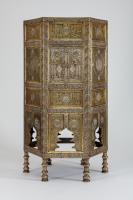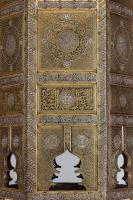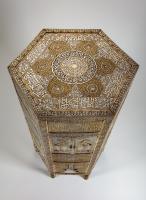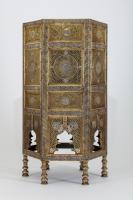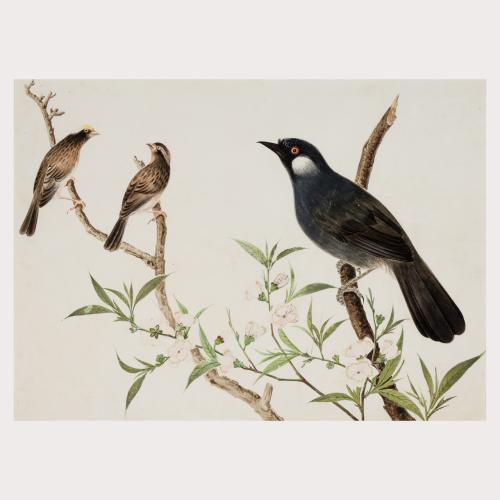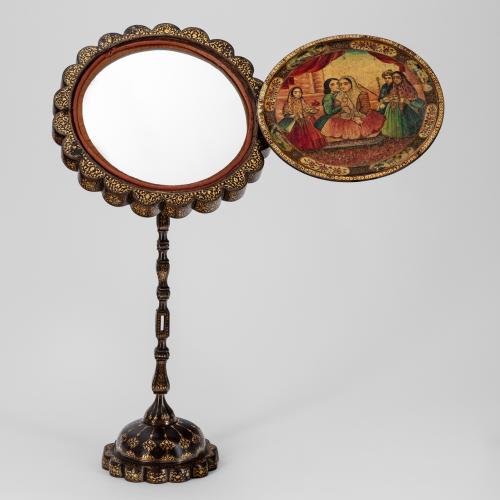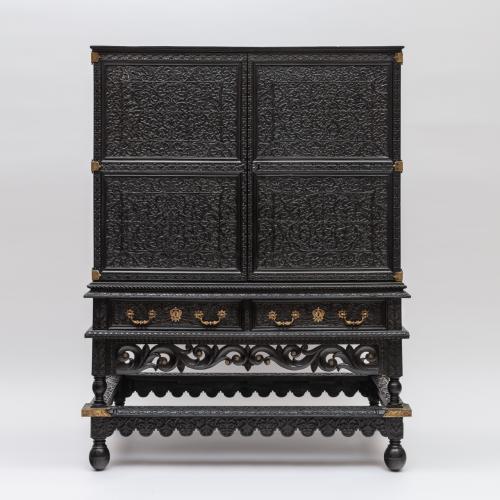
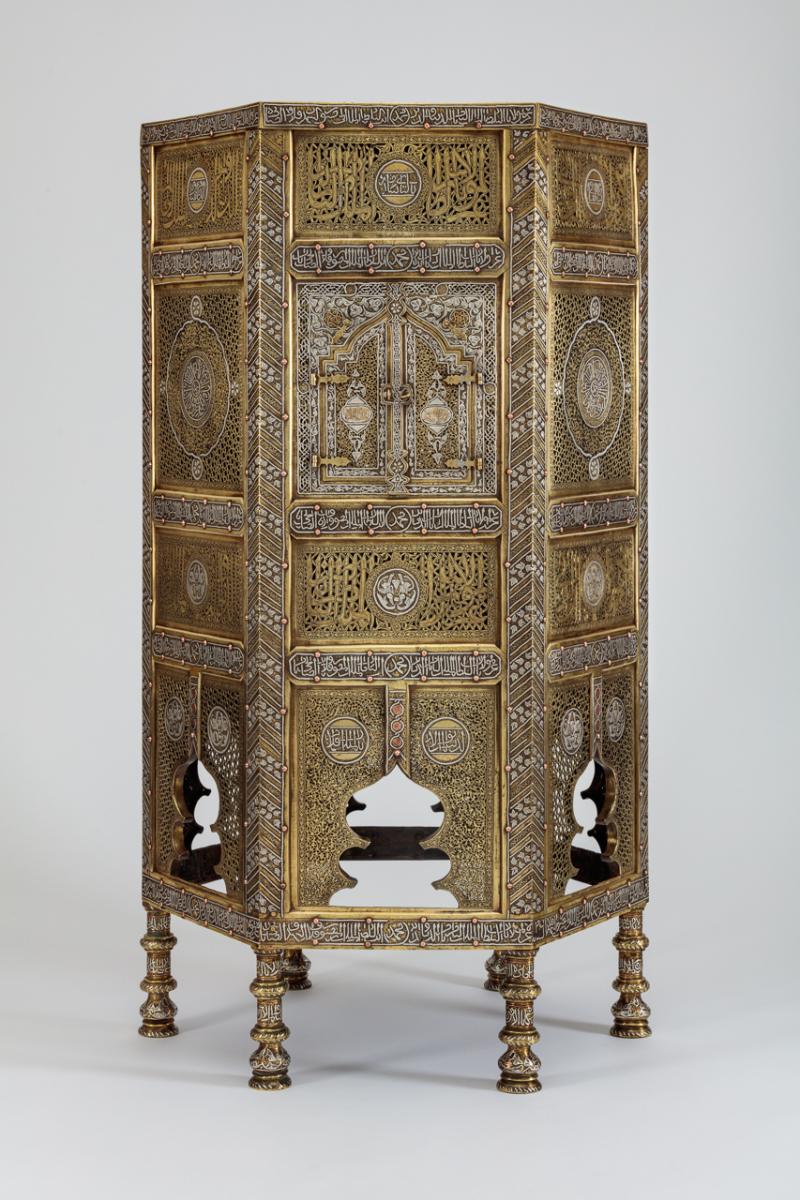

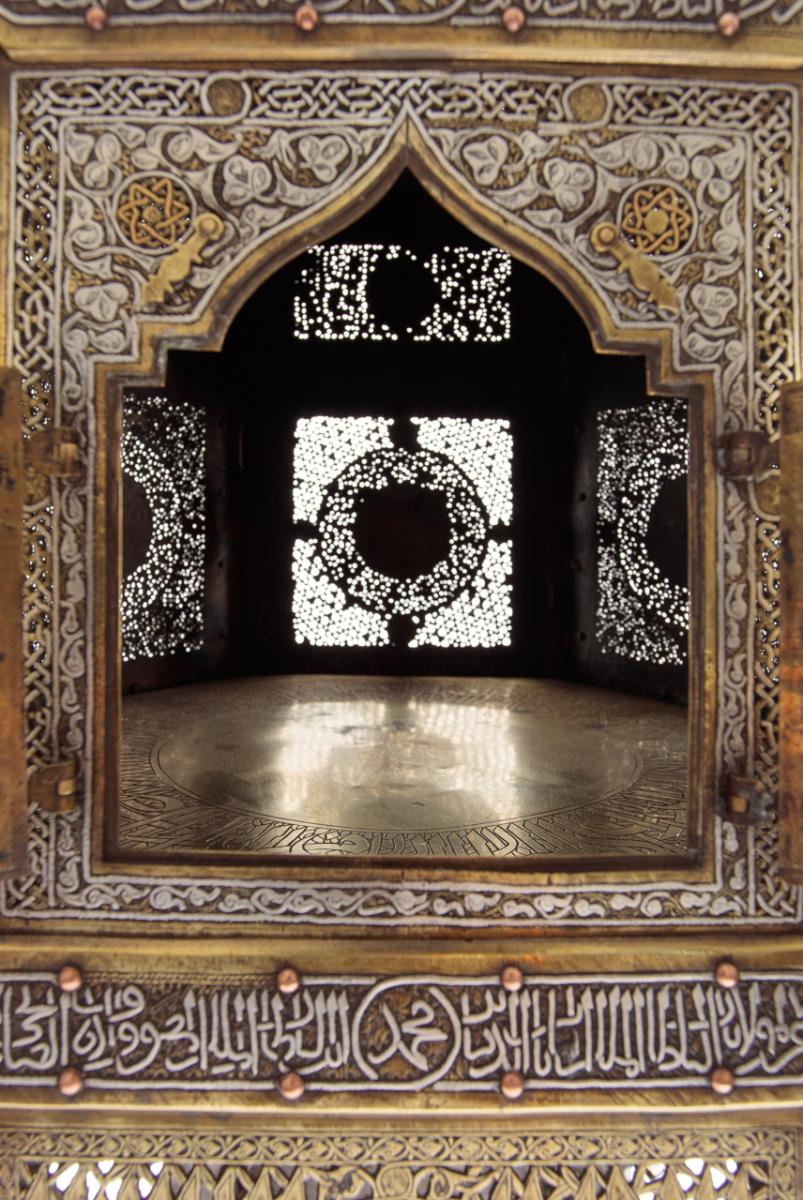
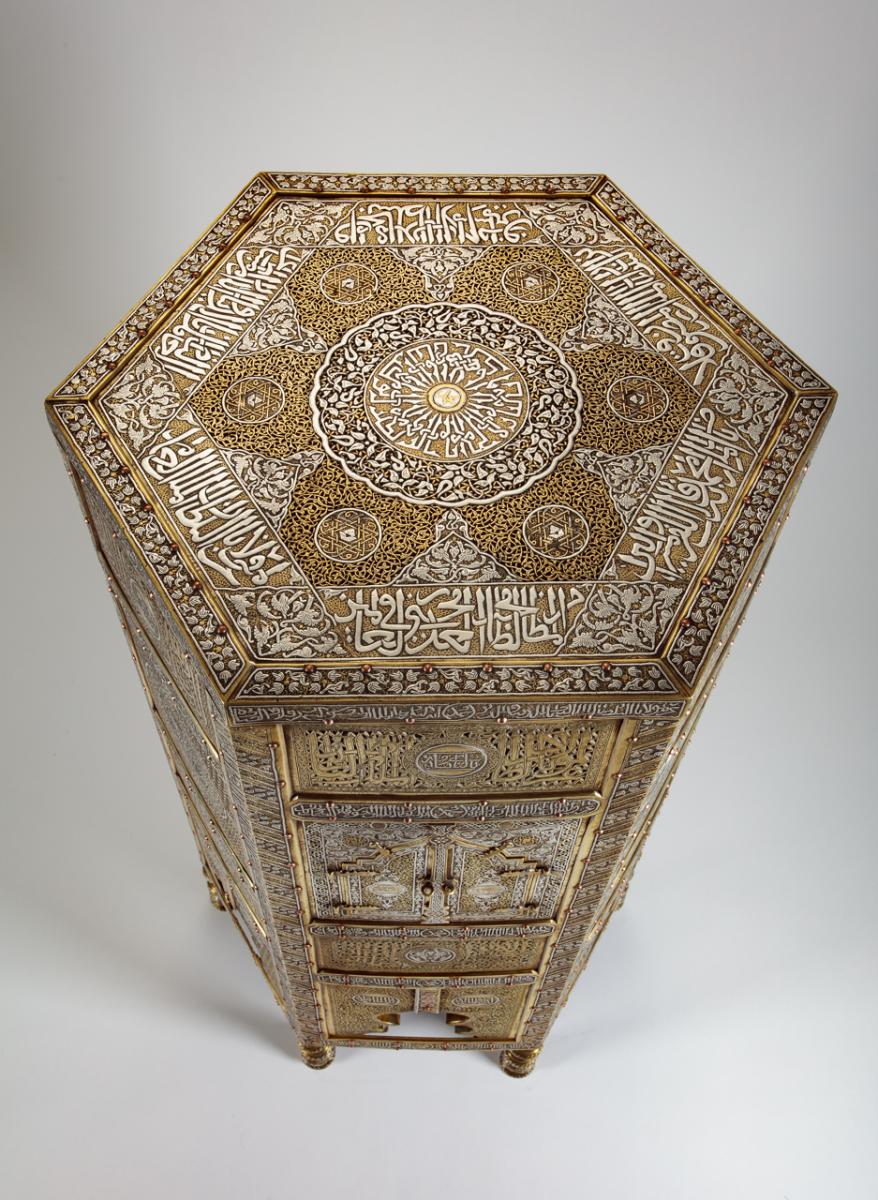

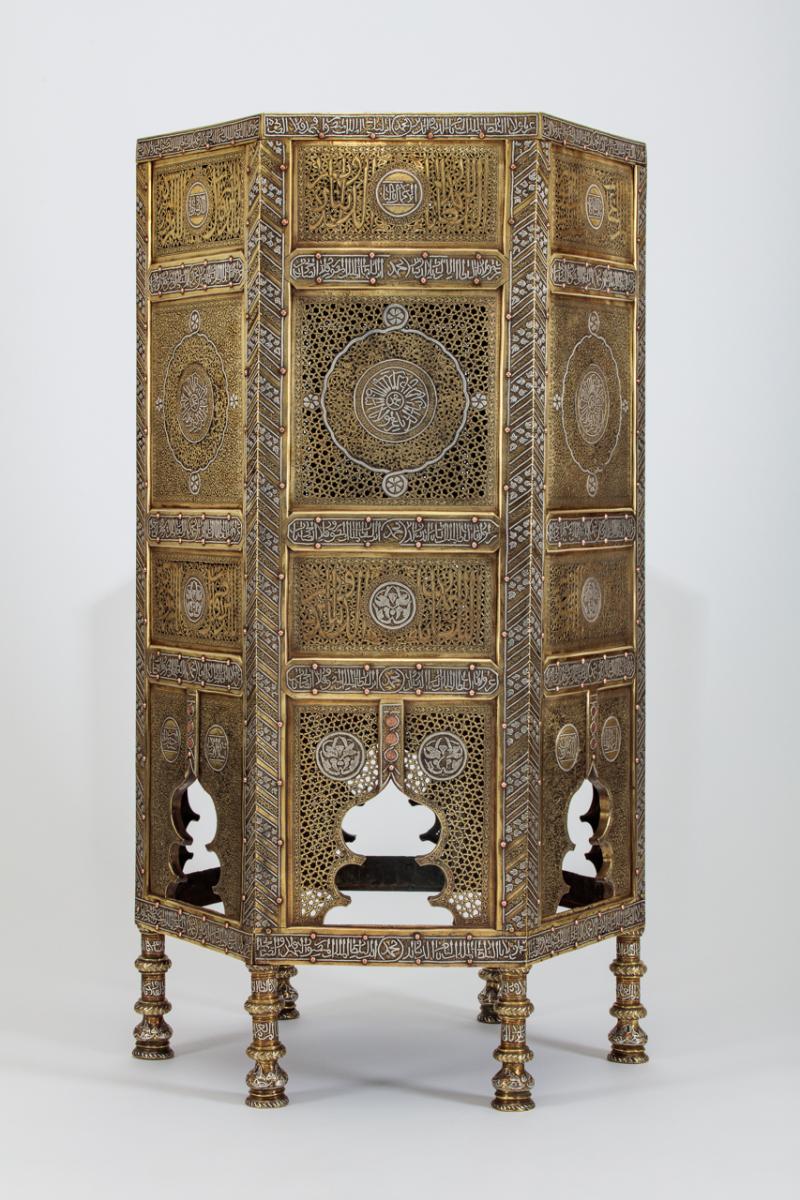
Price on application
This object is eligible for a Certificate of BADA Provenance
The BADA Standard
- Since 1918, BADA has been the leading association for the antiques and fine art trade
- Members are elected for their knowledge, integrity and quality of stock
- Our clients are protected by BADA’s code of conduct
- Our dealers’ membership is reviewed and renewed annually
- Bada.org is a non-profit site: clients deal directly with members and they pay no hidden fees
Neo-Mamluk Hexagonal Qur'an Table (Kursi).
Cairo, c. 1890
Workshop of Giuseppe Parvis
Brass inlaid with silver
85cm high, 47cm wide
Provenance: Belgian private collection
This silver-inlaid brass Qur'an stand (kursi), modelled on a 14th century Mamluk prototype, provides a fine example of the Mamluk Revival of the late 19th century. It was made in the workshop of Giuseppe Parvis, located in the Muski area of Cairo.1 A cabinet maker by trade, Parvis employed specialist metalworkers to create the kursis. They became commercially successful throughout the Islamic world, particularly amongst European and American travellers in the region.2 Two even reached the Topkapı Saray where they were mistakenly published as Mamluk originals.3
Parvis was an orientalist Italian designer who had been commissioned by Khedive Isma’il to create elements of the Egyptian pavilion at the Exposition Universelle in Paris, 1867.4 Following the opening of Cairo's Museum of Islamic Art in 1881, Parvis was granted permission by Isma'il to draw from the objects held in the museum. There he saw the kursi of al-Nasir Muhammad (accession no. 139), which provided the design for the present example.5
Both the form and ornamentation of the present kursi replicates the Mamluk original faithfully. The central roundels are inscribed with the name of 'Muhammad', whilst birds are applied with silver inlay in polylobed cartouches. It stands atop baluster-shaped legs, which can be unscrewed.
Similar neo-Mamluk kursis can be found in the British Museum, London (accession no. 1925,0407.1), Penn Museum, Philadelphia (accession no. NEP69), and the Doris Duke Foundation for Islamic Art, Honolulu (accession no. 54.136.1).
n.b. accession nos are clickable links.
1 Behrens-Abouseif, Doris. ‘From Post-Mamluk to Mamluk Revival: the art of metal iln Egypt and Syria after the Ottoman conquest of 1517’, in Michael Spink (ed.) Brasses, Bronze, and Silver of the Islamic Lands IV. London: The Nour Foundation in association with Azimuth Editions, 2022. P. 1344.
2 Milwright, Marcus. ‘Reviving the Past and Confronting the Present: Crafts in Syria and Egypt, c. 1875-1925’, The Journal of Modern Craft 13.1 (2020) 7-21: p. 13.
3 Çiğ. K. ‘Two metal Koran cases recently discovered in the Topkapı Palace Museum’,International Congress of Turkish Art 5 (1978). pp. 261-66.
4 Juvin, Carine and Makariou, Sophie. ‘The Louvre Kursi: Functions and Meanings’ in Doris Behrens-Abouseif (ed.) The Arts of the Mamluks in Egypt and Syria – Evolution and Impact. Bonn: Bonn University Press, 2012. 37-54: p. 49.
5 Illustrated in O'Kane, Bernard (ed). The Treasures of Islamic Art in the Museums of Cairo. Cairo: The American University in Cairo Press, 2006. p. 155. Cat. 137.
The BADA Standard
- Since 1918, BADA has been the leading association for the antiques and fine art trade
- Members are elected for their knowledge, integrity and quality of stock
- Our clients are protected by BADA’s code of conduct
- Our dealers’ membership is reviewed and renewed annually
- Bada.org is a non-profit site: clients deal directly with members and they pay no hidden fees


